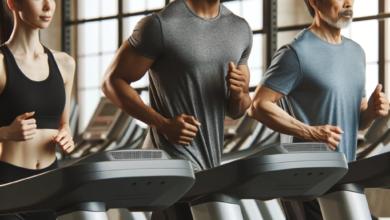10 ways the inactivity will ruin you

Imagine how long you sat during the day; at desk, in meetings, in the classroom, with friends, in the car, on the bus or front of the TV. When all of these are calculated one by one, they sit for almost 8 hours a day, sometimes it can go up to 15 hours for most people, which means that we sleep for 8 hours a day, and we stand for just 1 hour. Experts describe the “sitting disease” or inactiviy as sit for more than two hours. It also invites illnesses in this situation and shortens the average life span. There are no creatures created to killing their time with TVs and game consoles. If you don’t give our body the right to go to the outside world decorated with beauty, you can stay outdoor.
1-Causes posture disorder
Posture disorder is the cause of many pains in your body, especially the around your waist, shoulder and neck. You may be sitting down, but this is a problem if you are not sitting correctly. Not being able to sit correctly does not only lead to muscle stiffness and pain, but also leads to loss of mobility and various deformities of the back bones that lie on our head to our hips.
The right posture means that your body is aligned correctly, your shoulders should be in the same plane as your hip bones, your body weight should be evenly distributed.
2-Muscle atrophy
If you sit for more than you exercise, you can lose your muscles in a short time due to muscle atrophy. Your muscles lose their former bulge and strength. Basically if you don’t use your muscles will start to store fat now instead of using oil as energy. This is directly related to your posture, if you lose your muscles that determine your posture, your body will try to compensate for this and pain will occur.
3-Bones lose strength
Many people have osteoporosis, and more people are at risk of developing osteoporosis. If you want to strengthen your bones, you must stand up. Your bones are essential for lifting your body weight, and are the only centerpiece where your muscles are attached. If you don’t stand up or use your muscles, you will lose strength and intensity. Daily walks will protect you against osteoporosis and prevent you from losing your muscles.
4-Slows down your metabolism
Your metabolism, which keeps pace with your lifestyle, will no longer consume energy and reduce its own speed. Even a one-hour sit down reduces the production of fat burning enzymes by 90 percent. If you do not keep up with your decreased metabolic rate and continue to eat in the same way, gaining weight is inevitable.
5-Affects Insulin Release
Your sedentary life will not affect the operation of your pancreas and it will continue to produce insulin. However, as a result of prolonged inactivity your body’s sensitivity to insulin will decrease (hence insulin secretion from the pancreas will increase). This will leave you alone with the problems that can evolve to metabolic syndrome in long-term.
It has even been shown to lead to the development of type 2 diabetes. Research has indicated that women are at greater risk than men in this respect. Another study has pointed out that increased insulin, C-reactive protein and markers of chronic infection in the circulatory system are associated with cancer types such as colon and breast. In theory, increased insulin will stimulate the growth of many cells, including normal cells, while suppressing the immune system.
6-Increases Risk of Heart Attack
If you spend more than four hours a day in front of the TV or in any other way, your chances of developing cardiovascular disease increase by approximately 125% compared to those sitting in front of the TV for two hours a day. Excessive inactivity changes the way your body metabolizes fat called lipids. Your body reduces the production of good fats called HDL and indirectly increased LDL cholesterol which can block the vessel walls. For this reason, long-term sitting triggers events that may go up to heart attacks.
7-Reduces blood circulation
You have noticed that when we are immobilized during the journey, our feet swell, because the blood in our bodies is drawn to our feet by the effect of gravity. However, by moving our leg muscles while moving, it prevents blood from being pooled here and helps the blood go to the upper parts of our body as opposed to gravity. Therefore, prolonged settling causes the veins that we call varicose to lose their function and blood clots in the vein (Deep vein thrombosis). Our 24-year-old doctor, therefore, 11 hours of uninterrupted sitting as a result of the clot in the leg and the lungs or hearts which result life lost. Varicose stockings are essential if you are going to be inactive for long periods of time. For long-term flights, you must get up and walk every few hours.
8-Triggers Sleep Apnea
It is a condition that affects many people in our country. Apnea is a condition where breathing stops during sleep. If you are over the age of 40 and your weight is above avarage, you are at risk of apnea. In addition, if you inactive, you have doubled the risk of sleep apnea. The problem is that your body collects fluid due to reduced blood circulation. Excess fluid collected in your feet during the day, is distributed to your body when you lie on your throat accumulates in the upper respiratory tract causes difficulty breathing.
9-It ruins your psychology
Prolonged sitting may cause negative effects not only on your body but also on the functioning of your brain. If you do not work properly, your body will not have enough oxygen and hormones to send to your organs and your brain begins to adapt to this drowsiness.
As observed in people who have a daily work routine, these people are more energetic and more lively in mental health than those who sit down and work.
10-Prolonged inactiviy increase your chances of being disabled
As people get older, their inactivity increases inevitably. The research on elderly people showed that every hour after nine hours inactivity period increase the disability risk by 50 percent. Any daily activies after nine hours inactive period does not reduce the disability risk.



